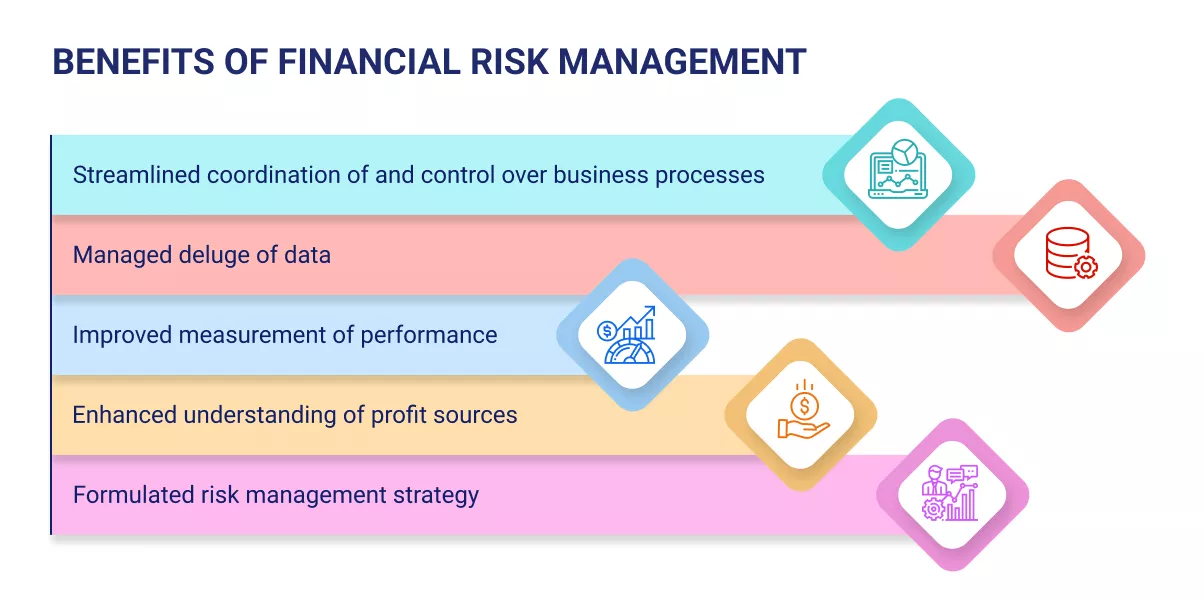Discovering the Relevance of Risk Management for Effective Decision-Making Strategies
In the detailed globe of company, Risk Management emerges as a critical factor in the decision-making process. The capacity to identify possible dangers and chances, and plan as necessary, can mean the distinction in between success and failure.
Recognizing the Principle of Risk Management
Risk Management, a critical component in decision-making, is often misconstrued or oversimplified. Risk Management includes self-displined and structured strategies, making use of information and insightful evaluations. From economic unpredictabilities, legal obligations, strategic Management mistakes, to crashes and natural disasters, it deals with numerous risks - importance of risk management.
The Duty of Risk Management in Decision-Making Processes
In the realm of strategic planning and service procedures, Risk Management plays an essential duty in decision-making processes. Risk Management therefore comes to be an important tool in decision-making, helping leaders to make educated options based on a thorough understanding of the threats entailed. Risk Management offers as an important part in the decision-making processes of any kind of organization.

Just How Risk Management Enhances Strategic Preparation
In the context of calculated planning, Risk Management plays a pivotal role. Starting with the recognition of possible threats, it better includes the application of Risk reduction steps. The role of Risk Management is vibrant yet not fixed, as it requires continuous surveillance and adjusting of techniques.
Recognizing Potential Threats

Implementing Risk Mitigation
Having established the value of recognizing potential risks, the next action is to check out Risk reduction. This process entails creating and executing techniques to handle recognized threats effectively. It is a crucial element of calculated planning as it improves decision-making by decreasing potential negative results. Risk mitigation techniques can range from Risk avoidance, Risk transfer, to risk reduction. Each strategy needs to be customized to Get More Information the specific Risk, considering its possible impact and the organization's Risk tolerance. Reliable Risk mitigation requires a deep understanding of the Risk landscape and the potential influence of each Risk. This understanding allows companies to prioritize risks and allot resources properly, guaranteeing that the most considerable dangers are dealt with first.
Monitoring and Readjusting Methods
Though Risk mitigation is a critical action in calculated planning, continuous monitoring and adjustment of these techniques is similarly vital. This continuous process allows companies to identify new risks and reassess existing ones, making sure the applied methods continue to be efficient in the ever-changing service environment. It additionally supplies a possibility to evaluate the success of the Risk Management steps, enabling changes to be made where necessary, additional boosting strategic preparation. Effective tracking and modification require using analytics and vital performance indications (KPIs) to gauge performance. These devices give valuable data-driven understandings that can inform tactical decision-making. For that reason, tracking and changing Risk Management techniques is a check this site out critical component for improving a company's durability and critical preparation.
Case Researches: Successful Risk Management and Decision-Making
Worldwide of service and finance, effective Risk Management and decision-making typically function as the pillars of flourishing enterprises. One such entity is an international oil firm that alleviated economic loss by hedging versus varying oil costs. In an additional instance, a tech start-up thrived by recognizing and approving high-risk, high-reward strategies in an unstable market. A global financial institution, confronted with governing unpredictabilities, efficiently navigated the circumstance through proactive Risk analysis and dynamic decision-making. These situations highlight the worth of astute Risk Management in decision-making processes. It is not the lack of Risk, however the Management of it, that typically separates successful firms from not successful ones. These instances emphasize the important duty of Risk Management in critical decision-making. importance of risk management.
Devices and Strategies for Efficient Risk Management
These devices, such as Risk signs up and warm maps, help in determining and analyzing potential dangers. Risk feedback techniques, a crucial component of Risk Management, involve accepting, staying clear of, moving, or mitigating threats. With these tools and methods, decision-makers can navigate the complicated landscape of Risk Management, therefore promoting informed and efficient decision-making.
Future Patterns in Risk Management and Decision-Making Methods
As we discover the large have a peek at this site landscape of Risk Management, it ends up being obvious that the techniques and devices used today will certainly proceed to develop. The principle of Risk culture, where every participant of a company is aware and included in Risk Management, will certainly get extra prestige. These fads herald a more aggressive and inclusive method towards Risk Management and decision-making.
Final thought

Risk Management thus comes to be a vital tool in decision-making, assisting leaders to make informed choices based on a comprehensive understanding of the dangers entailed. Risk mitigation techniques can vary from Risk avoidance, Risk transfer, to run the risk of decrease (importance of risk management). Efficient Risk reduction requires a deep understanding of the Risk landscape and the prospective influence of each Risk. Risk response strategies, an essential part of Risk Management, involve approving, avoiding, transferring, or mitigating dangers. The concept of Risk culture, where every member of an organization is aware and involved in Risk Management, will certainly obtain more prestige